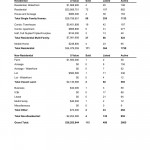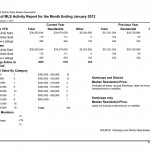This article appeared in the Kamloops Daily News on February 8th, 2012 and was written by Michelle Young.
Kamloops beat the national average in terms of population growth between 2006 and 2011, but it lagged slightly behind B.C.’s average.
Statistics Canada released initial figures from its 2011 census Wednesday that showed Kamloops has 85,678 residents. That’s up 6.6 per cent from 2006. B.C. as a whole saw its numbers rise seven per cent between 2006 and 2011.
Venture Kamloops executive director Dan Sulz said the city’s growth during tough economic times bodes well. “To me, that’s good news as opposed to what you hear in the world economy with people shutting down business and moving out of town,” he said. “We’ve not only sustained, but we’ve grown over that period.”
That’s attractive to business owners looking for places to set up or branch out, because it indicates a growing base for workers and customers, he said.
Mayor Peter Milobar said the census growth rate matches what City staff predicted using building permits and household averages. They estimated a 1.25 per cent increase per year. “We’re almost bang on,” he said.
Those figures are used when the City seeks funding or grants from the provincial and federal governments, he said. It also helps when the City looks at shopping areas, road networks and other infrastructure. “We have to be mindful of planning ahead on projects. We have to be ready to move if need be, for infrastructure grants,” he said.
City administrator Randy Diehl said a slightly higher growth rate would be nice, but the 6.6 per cent in five years is manageable. “When you have zero or no growth, your economy tends to be in big trouble. It’s not sustainable, people have a hard time making a living,” he said. “When you get higher than 2.5 to three per cent, it’s difficult for local government to keep up with the pace of change and demand on service from pipes and pavement to softer services like parks and recreation.”
While City council has been raising the idea of building a new performing arts centre in Kamloops, that’s driven more by the arts community than the population numbers, Diehl said. “It’s about the community that makes use of those facilities that wants more,” he said.
City community development supervisor Randy Lambright said the census figures match what was forecast in KamPlan as far back as 1997.
The stats also showed the number of homes in Kamloops was at 36,900 in 2011, compared with 34,100 in 2006 — a jump of about 8.1 per cent or 558 homes per year, he said.
That, too, was in keeping with the City’s predictions. “We’ve always said if we grow at 500 plus dwellings a year, that’s very manageable,” he said.
It’s a pace that lets the City keep up with infrastructure demands and doesn’t dump a huge tax burden on residents, Lambright said.
Knowing the City’s predictors are so close to reality helps keep on top of cost estimates so there aren’t massive fluctuations in utility or tax rates, he said. It also helps manage the available land supply, preventing sprawl and containing the growth, he said.
Statistics Canada will be releasing more information in the coming months, which Sulz is eagerly anticipating. “I’m really looking forward to finding out some of the details. I’m interested to see what age demographics are moving to each community.” Some of the age demographics are being released in late May, while Statistics Canada will be putting out information about households, families, homes and language in September.
How do we compare?
Statistics Canada released information Wednesday from the 2011 census that shows population increases for the following cities in B.C. that are comparable to Kamloops:
* Kamloops, 85,678 in 2011, 80,376 in 2006, up 6.6 per cent
* Nanaimo, 83,810 in 2011, 78,692 in 2006, up 6.5 per cent
* Kelowna, 117,312 in 2011, 107,035 in 2006; up 9.6 per cent
* Prince George, 71,974 in 2011, 70,981 in 2006, up 1.4 per cent
* Chilliwack, 77,936 in 2011, 69,217 in 2006, up 12.6 per cent.



